10 results
Common Core CCRA.W.3 resources for Prezi
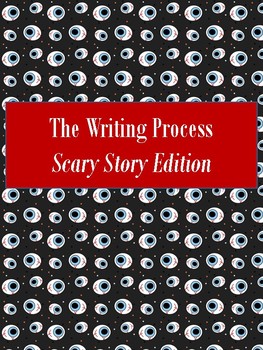
The Writing Process Prezi, NO PREP!
In all my years teaching English, it has become more and more apparent that students need to be told that writing is a process and each stage is equally important. Otherwise, students will simply draft a piece of text, read it over once if we’re lucky, and call it good. I have created for you a lesson that explicitly teaches students each stage of the writing process...and, because some find the topic exceedingly dull, I’ve given the lesson a horror genre slant to keep students highly engaged.
Subjects:
Grades:
6th - 11th
Types:

Writing Essay Introductions: A Strong Thesis Sentence in an Engaging Context
3-frame GIF describes a Toulmin-type thesis sentence and includes such an example; also lists 12 ways to set the tone/context/value of the argument; such as scene-setting, asking a question, quoting someone, etc. Image size 960×720 (file size 322 KB). Can be used as an animated-graphic slide within a PPT presentation about essay writing (PPT must be in Slide-Show mode to activate the slow, looping animation) or as a non-animated graphic in a handout; can be resized as needed. Note: You can pause
Grades:
7th - 12th, Higher Education

Newtonian Plot Dynamics: Animated GIF compares laws of motion and storytelling
Newton’s 3 laws of motion conceptually parallel the patterns of plot development in storytelling, fiction or non-fiction. This animated GIF comparison helps both physics people to understand narrative writing and also literary people to understand Newton’s Three Laws. Successive frames graphically show how forces influence people and things. Image size 960×720 (file size 640 KB) for use as a full-size PowerPoint slide. Each of seven frames lasts 2.5 seconds in continuous loop (PPT must be in Sli
Grades:
7th - 12th, Higher Education
CCSS:

Writing Essay Conclusions: Six Strategies Similar to Closure in a Story
GIF compares 6 ways to end an essay with 5 ways to resolve a story: restatement and manifesting a moral; anecdotal scene and natural termination/encapsulation; hook-and-return and completion of antithesis; pan-to-larger perspective and manifesting a moral; proposal and solution to central problem; and delayed thesis and manifesting a moral. Image size 960×720 (file size 765 KB). Can be used as a 7-frame animated-graphic slide within a PPT presentation about essay writing or short stories or movi
Grades:
7th - 12th, Higher Education
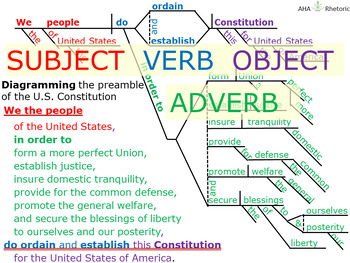
“Cumulative sentence” improves “We the people” readability—sentence diagram
A big thought may need a long sentence, but human awareness is limited to 4–7 chunks of information. A cumulative-generative sentence starts with the subject AND predicate and then adds modifying phrases after that. This kind of word-ordering allows the reader’s mind to pause and super-chunk the first part, and then add the supplemental ideas. The original “We the people…” sentence separates the subject and predicate and makes it more difficult for the reader to process the thought—the mind’s sh
Subjects:
Grades:
7th - 12th, Higher Education
Types:

What’s Happening? Asking questions is the beginning of wisdom—not fearing...
4-frame animated GIF shows how questions Who, What, Where, When, How, Why, and What if/else/about? or Whether A–Z or Σ? can help students progress from facts to analysis to wisdom—curiosity (and a deeper dialogue with others and reality) is a habit of mind worth developing. Image size 960×720 (file size 511 KB). Can be used as an animated-graphic slide within a PPT presentation about essay writing or critical thinking (PPT must be in Slide-Show mode to activate the slow, looping animation) or as
Grades:
Not Grade Specific
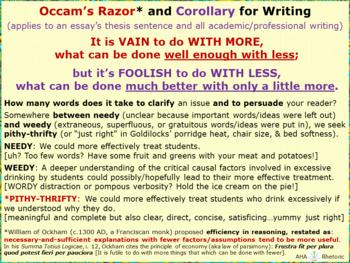
Occam’s Razor and Corollary for Writing: Use enough words but not too many
This animated GIF adapts an efficiency theorem for scientific explanations to the art of writing and gives some hints to help determine whether you are wasting words or leaving holes in your argument. Includes examples of NEEDY writing (unclear because important words or ideas are missing), WEEDY writing (with unnecessary and distracting words), and PITHY-THRIFTY writing (says all the important stuff without any fluff). Image size 960×720 (file size 904 KB) for use within a PowerPoint slide show
Grades:
7th - 12th, Higher Education
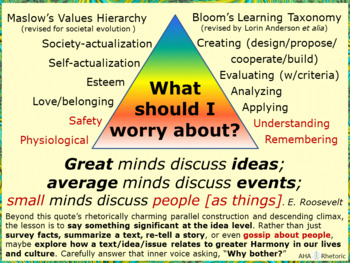
What should I write about? Maslow☺Bloom☺Eleanor Roosevelt’s “Great minds…”
Writers of essays, stories, songs, etc. nobly search for meaning, the deeper the better. But how do you measure/qualify “meaningful”? Abraham Maslow and Benjamin Bloom modeled values of life and learning with pyramid layers of meaning that build higher meanings from the layers below. A writer can climb the pyramid and discuss issues all the way up; however, if most readers are already halfway up, it makes sense to climb upwards from there and talk about ascending to even greater heights of deepe
Subjects:
Grades:
7th - 12th, Higher Education
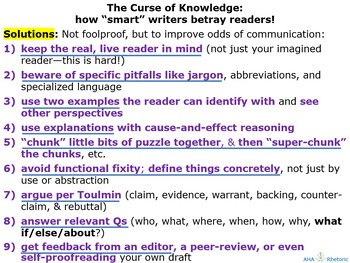
The Curse of Knowledge: How writers betray (but can also help) their readers
Writers falsely assume that readers share an identical understanding and that just giving readers all the argument pieces will persuade them. Cognitive biases can fool the writer, but remedies exist to help writers break the curse and really reach their readers by avoiding jargon, by giving examples and explanations, and by chunking and super-chunking the information in bite-sized thoughts, etc.This animated GIF includes the academic explanation as well as a cartoon example. Image size 960×720 (
Grades:
7th - 12th, Higher Education
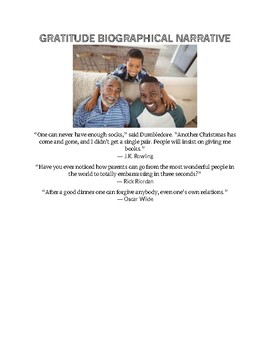
Gratitude Biographical Narrative
This is a great way to have your students connect with a past generation and understand gratitude in the month of November.
Grades:
6th - 8th
Showing 1-10 of 10 results

